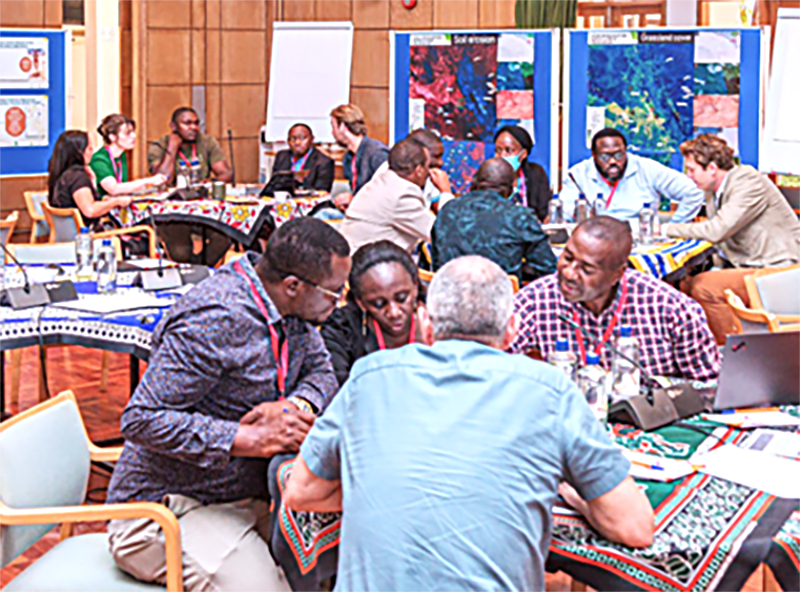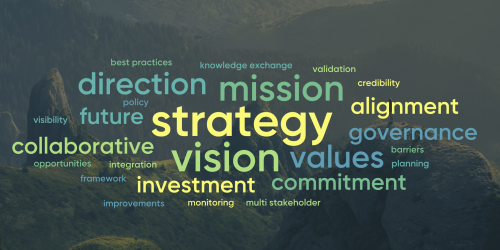From the vast steppe of Mongolia to the vibrant streets of New York and the ecologically diverse landscapes of Nairobi, a shared commitment to sustainable rangeland management gained momentum. These three regions—each with its unique challenges and contributions—served as the backdrop for the Rangeland Stewardship Council’s (RSC) efforts to build the Global Rangelands Standard (GRS), a framework that establishes measurable criteria and guidelines for responsible rangeland use, ensuring ecological health, economic viability, and community well-being while integrating local knowledge with global best practices.
Consultations, policy discussions, and technical workshops took place, all aimed at crafting a cohesive vision for rangeland conservation.
Mongolia: Local Voices Leading the Way
In Ulaanbaatar, over 130 delegates—including herders, government officials, and international stakeholders—gathered on September 6 to discuss how the Global Rangelands Standard can help sustain both the environment and herders’ livelihoods.
Central to these discussions were the voices of Mongolian herders who shared their experiences of navigating unprecedented challenges such as climate pressures and market demands. Despite these obstacles, they continue to depend on rangelands for products like wool, cashmere, leather, meat, and dairy.
Erdenetsetseg, Senior Policy Analyst from the Ministry of Environment, Climate Change & Tourism, emphasised that rangeland degradation and desertification are urgent threats requiring immediate action. The Global Rangelands Standard offers a valuable framework for addressing these challenges, incorporating principles of fair labour, legal compliance, indigenous rights, and sustainable land management. These principles aim to balance ecological health with economic stability, providing herders with a pathway to safeguard their livelihoods while protecting the environment.
New York: Aligning Local Realities with Global Ambitions
At New York Climate Week, discussions emphasised the importance of aligning global sustainability goals with the realities of land-based livelihoods through robust frameworks like the Global Rangelands Standard (GRS) and Monitoring, Evaluation, and Learning (MEL) systems. Una Jones, CEO of the Sustainable Fibre Alliance (SFA), described the GRS as a vital tool for integrating biodiversity, soil health, and water management into sustainability efforts, ensuring they address local needs alongside climate targets.
MEL frameworks to ensure the effectiveness and impact of the GRS were highlighted as essential for empowering herders and farmers to adapt to escalating climate challenges, including migration and health risks. These systems enable better decision-making by providing actionable data that reflects on-the-ground realities. Emphasis was placed on the need for inclusive approaches that incorporate the voices of pastoralists, farmers, and indigenous communities, who are often overlooked in global dialogues.
Collaboration across natural fibre sectors—such as cashmere, alpaca, mohair, and wool—was recognised as key to uniting efforts under frameworks like the GRS. These initiatives aim to bridge the gap between global ambitions and local realities, advocating for policies that prioritise land stewardship and resilience. By integrating these strategies, stakeholders can promote “nature positive” approaches that not only meet global targets but also empower communities to protect ecosystems and sustain livelihoods.
Nairobi: Turning Vision into Action
The October 24-25 workshop in Nairobi, hosted by the STELARR (Sustainable Investments for Large-Scale Rangeland Restoration) Project, brought together experts and stakeholders to discuss the development of the Global Rangelands Standard (GRS) and its supporting monitoring framework. Held at the ICRAF campus, the workshop was part of a larger effort to attract private-sector finance for rangeland restoration by offering incentives, such as sustainability standards. The meeting focused on refining the draft GRS, with the goal of creating a unified benchmark for responsible rangeland management that promotes ecosystem health, biodiversity, and the well-being of rangeland-dependent communities.
A key element of the workshop was the development of a rangeland monitoring framework designed to support private-sector investments by providing a baseline for measuring ecosystem services and restoration impact. The discussions delved into the tools and methodologies currently used in rangeland monitoring, addressing data collection, gaps in data availability, and the role of government initiatives in boosting investment in rangeland restoration. Participants examined how the framework could complement existing efforts, ensuring it was practical, adaptable, and could be scaled to meet the needs of diverse rangeland contexts.
In addition to refining the standard and monitoring framework, the workshop aimed to gather feedback from regional stakeholders to ensure that the GRS and monitoring framework reflected the perspectives and needs of communities across the continent. Special attention was given to integrating indigenous knowledge, understanding the socio-ecological contexts of rangeland systems, and fostering sustainable practices. The workshop’s discussions ultimately aimed to create a feasible and effective system for rangeland restoration that addresses global challenges such as land degradation, biodiversity loss, and climate change impacts.
Toward a Nature-Positive Future
The Rangeland Stewardship Council’s work, spanning continents and sectors, highlights the power of collaboration in addressing global challenges. The Global Rangelands Standard represents more than just guidelines—it’s a unifying vision for rangeland conservation, designed to support both people and ecosystems.
From the consultations in Mongolia to policy discussions in New York and technical workshops in Nairobi, the journey demonstrates a growing commitment to sustainable practices that transcend borders. Together, these efforts pave the way for resilient rangeland ecosystems, thriving rural communities, and a more sustainable future.
Contact us for more information at info@rangelandstewardship.org.





